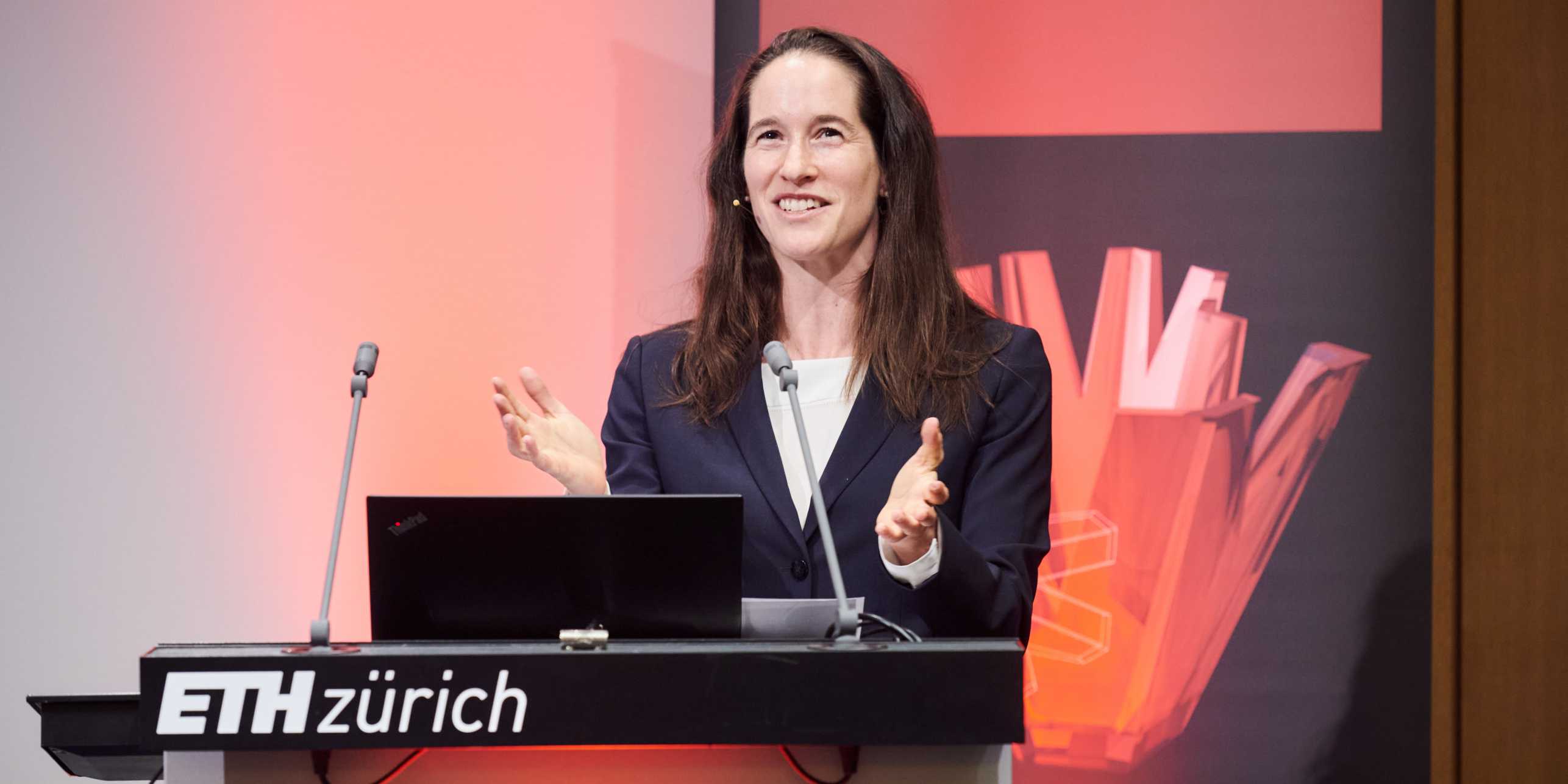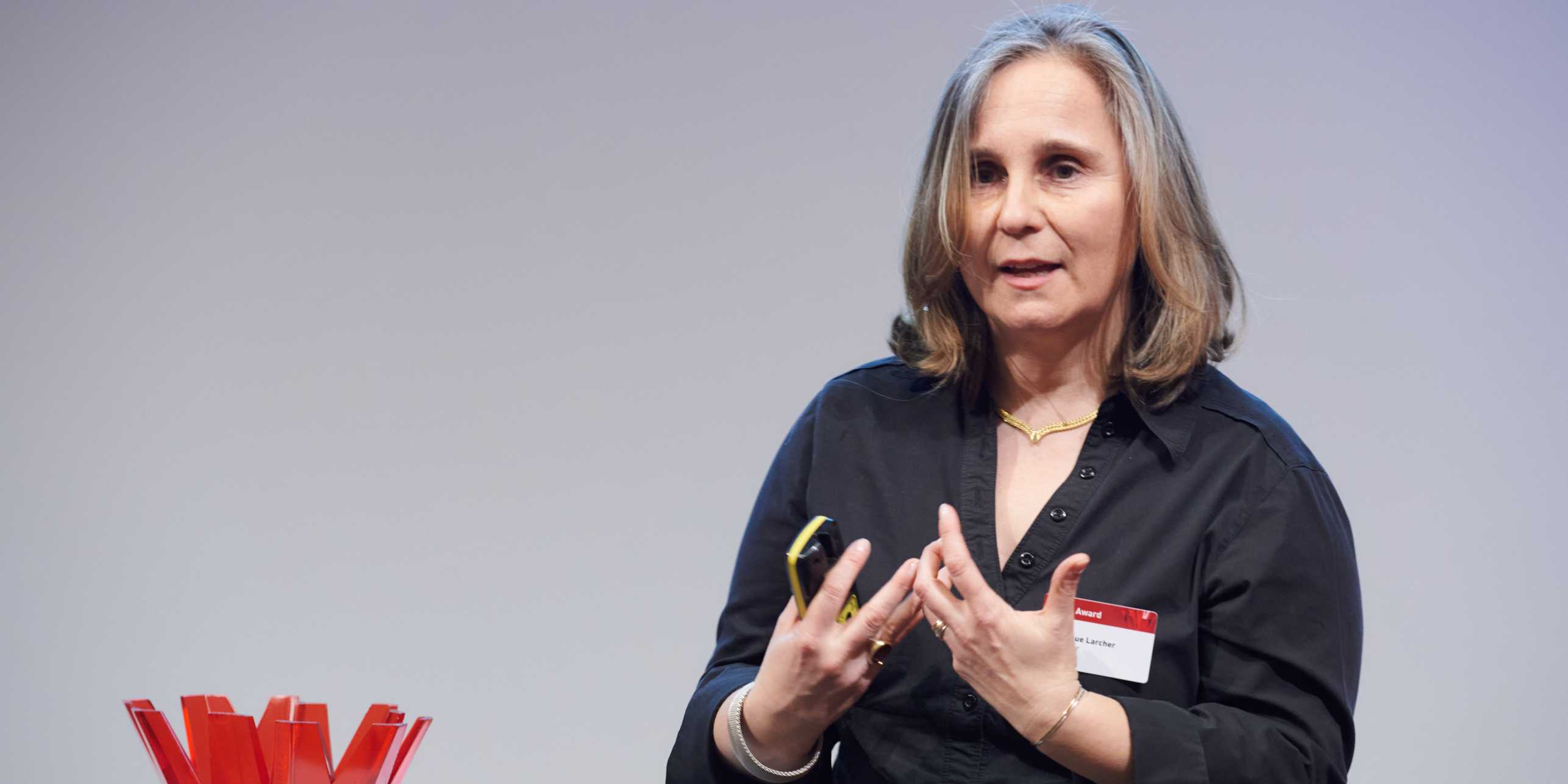Spark Award for new biochemical method
From diagnostics to treatment, the biochemical method developed by Daniel Richter, Edgars Lakis and Jörn Piel paves the way for a diverse range of applications in research and medicine. The researchers received the ETH Zurich Spark Award 2022 for their innovative solution.

It turned out to be one of the biggest surprises of the researchers’ lives. “We honestly didn’t think we had a chance of winning because our technology is so hard to explain!” says Jörn Piel, ETH Professor of Microbial Interactions. Together with Daniel Richter and Edgars Lakis, he developed an innovative biochemical method that allows proteins to be loaded with a drug molecule, which the protein then carries to the right place in the body. The culmination of the researchers’ efforts came yesterday evening when they received the Spark Award 2022 at the Audi Max at ETH Zurich in front of an audience of some 150 guests. This is the eleventh time that the award ceremony to honour the university’s most promising innovation has been hosted by ETH transfer, the technology transfer office at ETH Zurich.
Last year, ETH Zurich recorded a total of 99 patent-pending inventions, 20 of which were shortlisted for the award and five of which made it through to the finals. The jury and the experts from ETH transfer were particularly impressed by the variety of potential applications for the method developed by the three microbiologists. As well as being used to treat diseases, it can also be used in diagnostics and pharmaceutical research.
The inventors have one goal they are particularly excited about: “We hope we’ll eventually be able to use it to treat cancer by modifying antibodies,” Richter says. He originally came up with the method as part of his Master’s thesis at the Institute of Microbiology, before developing it further with the help of doctoral student Edgars Lakis. One of the key advantages of their method is that it also allows proteins to be modified within living cells.
Successful Swiss inventions
This year’s winners of the Spark Award follow in a long tradition of successful Swiss innovations. “Switzerland is a nation of inventors,” said Vanessa Wood, Vice President for Knowledge Transfer and Corporate Relations, in her welcome speech, noting that the country currently ranks third in the world.
Wood explained that ETH Zurich’s contribution includes some 100 patents a year, many of which lead to the creation of successful companies. She cited examples of previous Spark Award winners such as the ETH spin-off Haelixa, which made a name for itself by using DNA markers to track products, and last year’s winners, who are now ramping up their production process for sustainable composites through the spin-off Antefil Composites.

There is, however, a long way to go before the method developed by the Spark Award 2022 winners will be ready to use in the pharmaceutical industry and, eventually, in medical and diagnostic applications. The three researchers are well aware of this fact, and are currently busy working on their next milestone of demonstrating proof of concept. After that, they should be ready to test the prototypes on model organisms in pre-clinical trials.
Perseverance is the key
The idea that innovators need to be prepared for the long haul was reiterated by keynote speaker Veronique Larcher, director of AMBEO Immersive Audio at Sennheiser. Developing products of outstanding quality requires more than just science and research, said the mathematician and music lover who manages to combine both her passions in her job at Sennheiser.
“It also takes perseverance and a willingness to accept setbacks,” Larcher said. She also emphasised that the only way to end up with a successful product is through outstanding teamwork and a proper understanding of the target group’s needs.

The winning technology:
A versatile method: The biochemical method developed by Lakis, Piel and Richter offers significant potential in the fields of medicine and research. Their method can be used to link a selected protein to any payload they choose – for example a drug molecule or a biomarker. The reaction that creates this linkage is highly selective, allowing cell functions to be modified with a high degree of precision.

The finalists:
Delicate touch: Today’s robots cannot replicate the human sense of touch. As a result, they either end up dropping objects or gripping them so tightly that they break them. Johannes Weichart, Cosmin Roman and Christofer Hierold have developed a flexible network of sensors with a high density of sensing cells resembling the receptor network of human hands. Their plan is to integrate this into the hands of robots to improve their ability to feel and hold objects.

Faster drug testing: Drug development is time-consuming and expensive. This makes it all the more important to identify promising drug candidates at an early stage of the process. Matthias Bütikofer, Roland Riek and Félix Torres have come up with a characterisation method that uses nuclear magnetic resonance (NMR) spectroscopy to quickly and reliably show whether a drug candidate interacts with the target molecule and to determine the intensity of this interaction.

Plant-based meat: There is a growing market for meat alternatives, especially plant-based alternatives that replicate the consistency, flavour and appearance of meat. Marbling – the way in which muscle and fat is distributed in a steak – is particularly challenging to recreate in vegetarian products, but Martin Hofmann and Jan Vermant have succeeded in developing a method to do just that. Their new method is easily scalable and particularly suitable for industrial use.

Digital currencies: The popular saying that “cash is king” is not without merit. Paying in cash gives us the reassurance of knowing that our money will reach the recipient – and it allows us to keep payments private if we wish. In future, it should be possible to achieve the same goals with cryptocurrencies. The Platypus digital currency developed by Karl Wüst, Kari Kostiainen and Srdjan Capkun provides a simple and reliable way to process domestic payments while protecting people’s privacy.

Comments
No comments yet